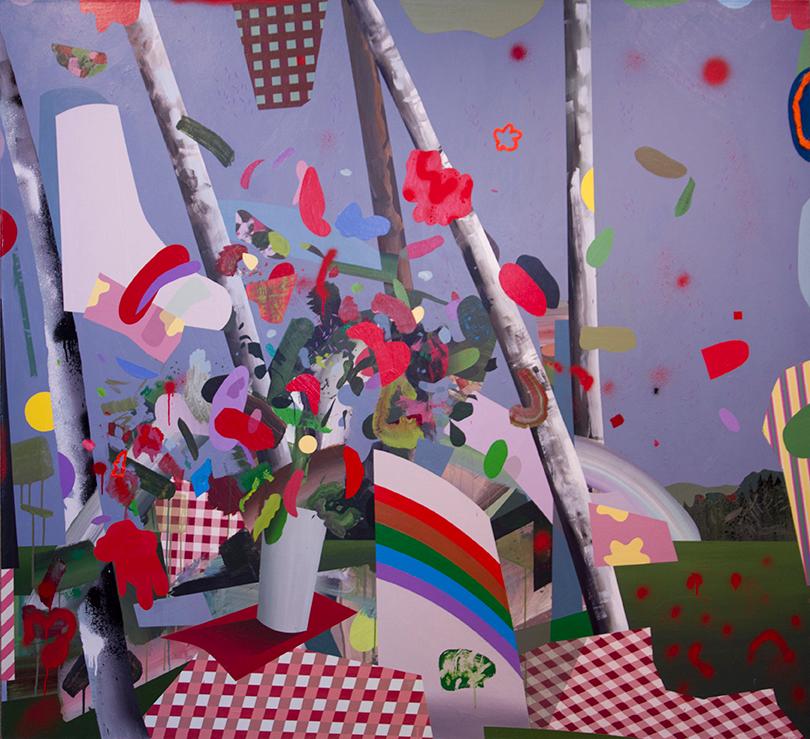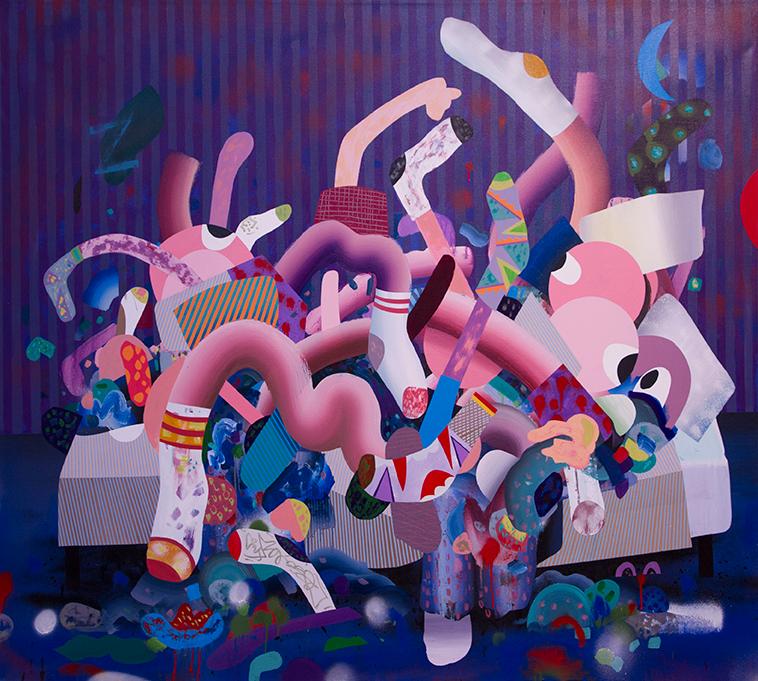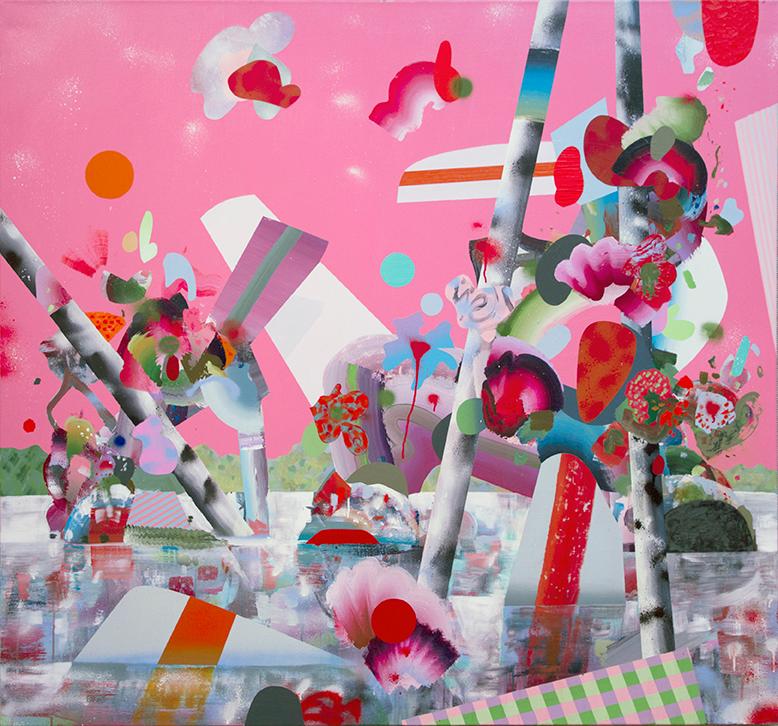Icy Flowers: A garden of dreams and nightmares on display at Marian Gallery
Icy Flowers: Tom Berenz
- Exhibition dates: now through February 12
- Gallery hours: 9 a.m. to 7 p.m. Monday to Friday, 1 to 4 p.m. Saturday and Sunday
- Artist Lecture: 5 p.m. Wednesday, Feb. 8 in the Gerhardinger Center, Room 109; reception to follow from 6 to 7 p.m. in the Marian Gallery
Amanda Cibulka, English major and fine art minor, walks us through her experience in the latest Marian Gallery exhibit featuring local artist Tom Berenz.
The first painting I see as I enter the gallery presents a bewildering scene: red-and-white gingham, a slice of rainbow, splats of red and shreds of green strewn across a blue background. It’s as if a giant hand has flung a bouquet onto a five-foot canvas.
What is this about? Despite the kaleidoscopic distortion, there is the suggestion of a story I feel I ought to understand, flashes of the familiar within a whirl of bewildering movement.
I read the title: “Mother’s Windmill Garden.” It seems an unlikely description for this barely-contained catastrophe.
But standing this close up, I can see a delicate cloud of pale-pink flower petals, and the confusion of colorful blobs become airborne leaves and flower heads. I step backward, and yes, that looks like a windmill’s sail poking down from the top edge of the canvas.
I can’t quite tell what has sent this garden flying -- are those white shapes some kind of debris? Or maybe a sudden gust of wind is bending the slim birch trees and carrying off delicate flowers.
I can’t tell whether this is a cheerful scene, or a terrifying one. Maybe it is both.
This element of mixed messages runs through the rest of the work in this exhibition by local artist and educator Tom Berenz, an ambiguity represented by the exhibition’s title, “Icy Flowers.”
Flowers play a major role in the symbolic vocabulary in Berenz’s work due to their association with both celebration and mourning. Flowers are arranged in a wedding bouquet, just as they are set beside a gravestone.
The juxtaposition of words in “Icy Flowers,” Berenz explains, refer to this contrast. “We normally think of flowers not being cold or frozen, so I'm thinking about how I can contradict what most people think about flowers.



“A frozen flower or an icy flower means a dead yet beautiful thing. What I'm interested in as an artist is really straddling or balancing the two.”
As I continue through the gallery, I am hit by color, bright and electric, light and cheerful, deep and intense. These paintings are a playful, cartoonish burst of pattern and hue cavorting through a dreamscape. But they are also full of drips and collisions, points of contact between shapes and colors that become points of conflict. All around the crisp-edged circles, the gingham and stripes, are smudges and dabs, splatters and smears.
Berenz likens his playful use of color and imagery to the way a comedian uses humor. “A comedian is funny, makes people laugh, but a lot of times what's being discussed is a really serious personal or societal critique.” In a similar way, Berenz’s bright palette invites viewers into the work, revealing darker undertones with further exploration.
These images read much like memories. They call to mind a memory from childhood, vivid but not entirely logical, reassembled each time it is recalled.
As an art student, I am awed by the vivid yet dreamlike quality Berenz achieves, his combination of artistic styles and his manipulation of media. It is not easy to create compositions this chaotic yet cohesive, a space in which familiarity and strangeness intertwine.
These works are, above all, alive. Even standing directly in front of them, I can’t make the images hold still. The paintings themselves do not change, but the connections within them do, from moment to moment and from person to person.
Berenz explains, “I'm interested in how open the paintings can be … I'm allowing the viewer to really participate in that conversation, or in that dialog, to come up with an understanding or a meaning that’s important to them.”
As I leave the gallery, I feel energized by the feverish vitality of those paintings, the world of parallel and paradox they have brought to life in my mind. My head is filled with crowds of colorful questions, questions which have no single answer or, perhaps, no answer at all.
For a minute I stand outside the gallery, wondering how I feel about this lack of closure. Is this a source of uncertainty, and therefore disquieting? Or is it a fount of possibility, and therefore wonderful?
Both, I decide. It is both.
- - - - -
Amanda Cibulka is a senior majoring in English and minoring in fine art. She graduates in May.